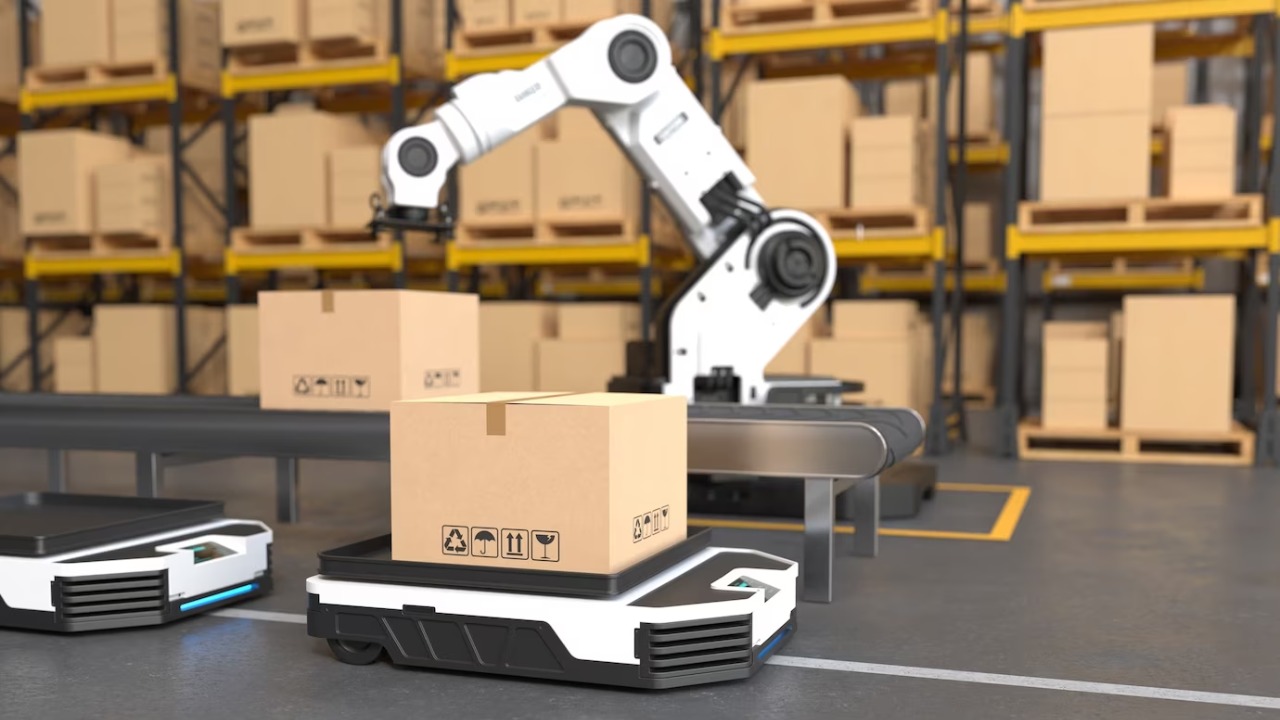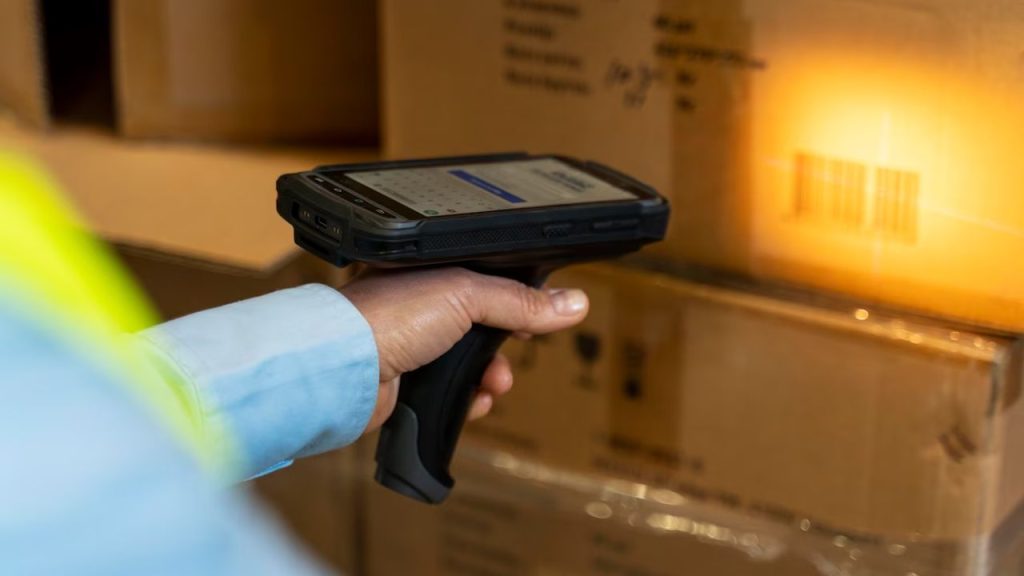E-Logistics is Revolutionising the Supply Chain
E-Logistics is Revolutionising the Supply Chain
In the digital age, with its fast-paced progress, where technology is intrinsically governing every aspect of our lives, it is no surprise that even the movement of goods and information, unlike before, has undergone a significant transformation.
One such transformation is undoubtedly e-logistics, or electronic logistics. In this blog attempt, we will delve into what e-logistics is, how it differs from traditional logistics, and why it has become a pivotal player in the world of e-commerce and supply chain management.
What is E-Logistics?
In its entirety, e-logistics, also known as e-commerce logistics, is a technical advancement or boon that has entirely transformed the way we see and handle supply chain operations. It is an appropriate and necessary response to the increased demand for online transactions, automation, digitisation, and efficiency in the vast logistics industry.
E-logistics, armed with the advantages of the internet and digital advancements, effectively streamlines the transportation and timely distribution of goods on a global scale. But the power of it goes beyond our understanding it is not only moving goods from point ‘a’ to ‘b’. It deals with the management of inventory, warehouses, and storage, order pickup and timely delivery, and ensuring customer experiences. In simpler terms, e-logistics takes the entire traditional logistics process online, leveraging the capabilities of information technology.

Difference of E-Logistics to Traditional Logistics
To truly grasp the essence of e-logistics, let’s draw a comparison with its traditional counterpart. Cast your mind back a decade or so, when basic courier services in India involved a multitude of manual tasks. From filling out forms to making payments via cash or cheque and tracking parcels through phone calls, the process was cumbersome, to say the least.
Imagine placing an order with your local grocer, eagerly waiting the delivery of those five packs of cornflakes or another essential. It often meant a lengthy wait, potential errors in the order, and the inconvenience of cash payments. This was the reality of traditional logistics, characterised by inconvenient manual processes and a lack of communication.
E-logistics, on the other hand, is a paradigm shift. In this internet-enabled logistics ecosystem, every participant operates seamlessly on the same digital page. Paperwork and payments are almost completely digitised, and communication occurs at every crucial step in the process. Data is uploaded once and automatically transmitted across integrated software systems, keeping complete transparency throughout the supply chain operations.
The differences between traditional logistics and e-logistics are profound.

- Manual Effort vs. Automation
Traditional logistics relies on manual effort and basic communication channels, while e-logistics is internet-based and requires minimal manual intervention. - Paper-based vs. Digital
Traditional logistics involves time-consuming paper-based processes, while e-logistics is a digital process with automated updates, reducing manual errors. - Limited Visibility vs. Transparency
Traditional logistics often leaves customers in the dark regarding timelines, costs, and quantities, while e-logistics provides clear visibility and upfront information. - Slow Payments vs. Instant Transactions
Traditional logistics involves conventional payment systems, leading to delayed payments and confirmations. E-logistics enables secure online payments with instant verification. - Document Handling vs. Paperless
Traditional logistics relies on manual handling of documents, which is inconvenient and are prone to errors, whereas e-logistics keeps the process paperless and contactless. - B2B Focus vs. B2B and B2C Agility
Traditional logistics primarily serves the B2B sector, while e-logistics caters to both B2B and B2C eCommerce logistics, prioritising timely delivery and customer experience. - Old and Slow Technology vs. New and Fast Innovation
Traditional logistics relies on outdated technology like telephones, and fax systems. E-logistics thrives on cutting-edge technologies such as IoT, RFID, GPS tracking, and digital twins.
The Inner Workings of E-Logistics

The impact of e-logistics on the growth of e-commerce in India cannot be overstated. It has simplified information exchange, data sharing, performance analysis, and customer experiences. Let’s simplify this complex system with a straightforward example.
Imagine you’re a customer ordering five boxes of cornflakes from an online grocery store. Here’s what happens behind the scenes in the e-logistics process:
- Order Placement
You can place an order and make the payment online. - Automated Checks
In the background, the system checks product availability, validates your payment, and assesses delivery timelines, all within seconds. - Confirmation
You receive an order confirmation via email or SMS, complete with order and tracking IDs. - Order Processing
At the store’s distribution centre, your order is received, and the goods are fetched, packed, labelled, and assigned to a delivery partner. - Automated Assignment
The delivery partner, assigned automatically, collects your parcel, checks the delivery address via integrated maps, and delivers the product to your doorstep, updating the status on the system via a smartphone. - Delivery Confirmation
You receive a notification confirming the delivery, and you can track the status using your tracking ID.
Even though this example does simplify the process greatly, it’s very important that we note that e-logistics in its whole complex process, includes plethora of components, namely online procurement, materials handling, warehousing, storage, packaging, shipment, last-mile delivery, and reverse logistics.
Opportunities and Challenges in E-Logistics

E-logistics has created a world of opportunities by opening doors to businesses across domestic and international scale. Major offerings are
- Access to a Wider Market
E-logistics allows access to a broader pool of online sellers and multi-modal delivery options. - Cost Efficiency
It promotes transparency in price comparison and eliminates hidden fees, benefiting both buyers and sellers. - Increased Customer Experience
E-logistics leverages cutting edge technology to provide real-time data and insights, fostering better customer service and satisfaction. - Data-Driven Strategies
It offers access to real-time business insights, aiding in building growth strategies and overcoming bottlenecks. - Streamlined Processes
E-logistics identifies processes that can be optimised for efficiency and the strategy driven decisions are done timely.

But with opportunities also come challenges that we need to address.
- Online Security
A complete end-to-end safe online security infrastructure for the payment transaction and data protection is something of prime importance - Managing Demand
The unpredictable nature of demand, affected by seasonality and competition, requires efficient inventory management and reordering. - Navigating Regulations
Adhering to complex domestic and international trade and shipping laws, including taxes and customs duties, can be challenging. - Trust Building
Building and maintaining customer trust is essential. Consistently exceeding expectations is crucial. - Infrastructure Support
The logistics infrastructure in developing countries like India faces challenges, including road conditions, internet access, GPS tracking mechanisms, and associated costs.
E-Logistics in India and Its Role in e-commerce

It is no secret that e-logistics is the one that is transforming e-commerce operations throughout India and globally. As the population, and demand for efficient logistics services rise in the nation, the industry has rapidly undergone an explosive transformation, leveraging the benefits of digital technologies throughout its operational landscape.
In the present time, e-commerce businesses focus on fast delivery and effective customer support, completely transforming the traditional setup of businesses and stores. e-logistics is the driving force behind this as it is the one centralising data in a digital databaseand making it accessible to the parties and stakeholders involved
With electronic logistics, customers can effortlessly check the status of their packages using tracking IDs, specify delivery instructions, and choose delivery slots. Depending on the package’s nature, the entire delivery process can be contactless, enhancing safety and convenience.
Moreover, e-logistics optimises inventory and warehouse management through real-time stock data. Utilising tools like the Economic Order Quantity (EOQ) formula, businesses can calculate optimal reorder quantities, avoid overstock and deadstock, and make data-driven decisions.
In essence, logistics management in the digital age goes beyond merely transporting goods. e-logistics effectively optimises the movement of goods and information from their origin to their eventual destination, wherever that may be. Also, to enhance customer satisfaction and increase sales in the best way possible.

In conclusion, e-logistics is more than a fancy word. It’s more of a transformative force that has for the better reshaped the way we handle logistics and supply chain operations. It has eventually simplified what appears to be very complex, making it more streamlined, and provided businesses with new and improved opportunities. As the improvement in technology continues to go forward, so will e-logistics, to bridge the gap between the buyers and their desired products, one seamless delivery at a time.
So, the next time you click “Place Order” for your favourite products online, remember that behind that simple action lies a world of e-logistics innovation, ensuring your order reaches you with the speed and efficiency you are expecting from the digital age.
FAQs
E-logistics, or electronic logistics, is undoubtedly one of the major players who is streamlining supply chain management by utilising technology to its maximum limits. It has transformed how goods and information are managed, further making the processes efficient and accessible. For meeting the increased demand for online transactions, digitisation, automation, and efficiency in logistics.
E-logistics, almost to an extent, is very different from traditional logistics, which being driven by the internet, cutting down on manual effort, and providing a digital, automated process. It not only focuses on B2B sectors but also to the rising B2C e- commerce industry, aiming to meet efficient delivery and enhance customer experiences.
E-logistics works by leveraging the internet and many digital technologies to manage the transportation of goods and timely distribution. Utilising advanced technologies like IoT, GPS tracking, and RFID, this further streamlines the operations, both in India and on a global scale.
Opportunities with e-logistics include access to a wider market, increased cost efficiency, rise in customer experience, streamlined processes, and data-driven strategies. The challenges are ensuring online security, meeting varying demand, moving through complex regulations, ensuring infrastructure support, and building trust with customers. When it comes to businesses, by addressing the problems with implementing strategic planning and using innovative technologies, and focusing on the customers, they are optimising the logistics and supply chain.
The Indian e-commerce industry is experiencing rapid growth due to e-logistics centralising data in a digital database accessible to the parties involved. It pushes faster delivery, optimises warehouse and inventory management, and increases customer support. This in turn streamlines the supply chain, making the logistics run effectively and ensuring a positive response to customer demands.

